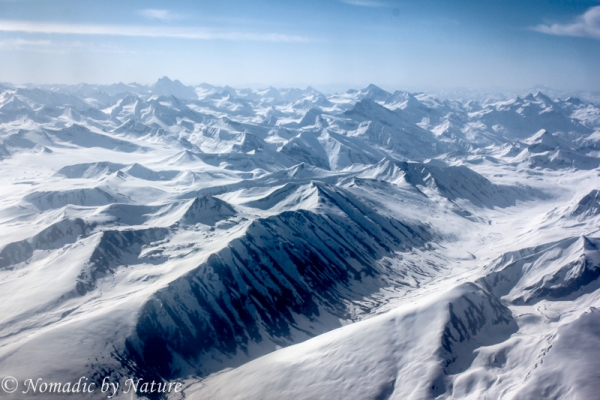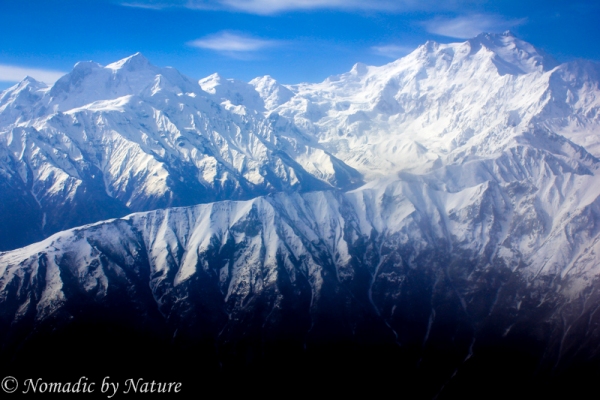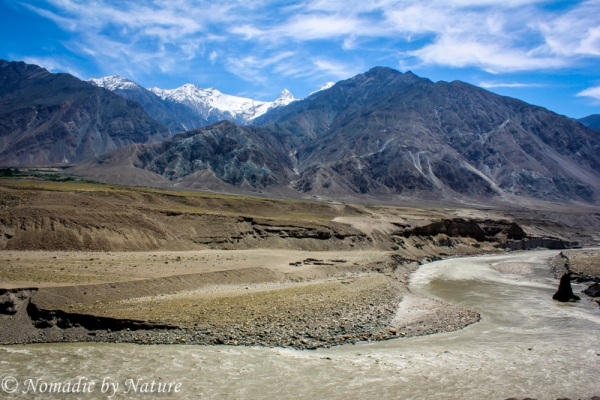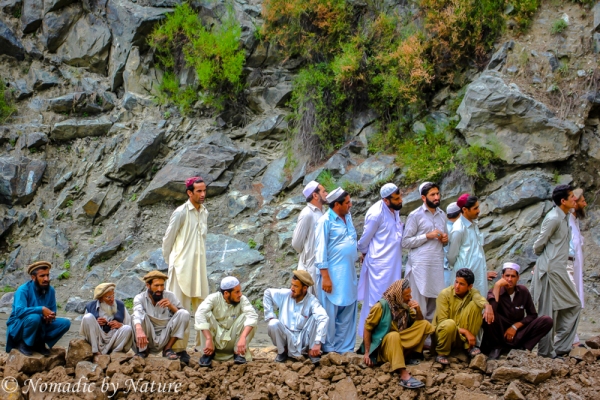
The Mecca of mountains in Pakistan’s Shangri-La
Will the economic growth sheer the alpine forests of their trees and pollute the great Indus River?
Towards the boundless northern areas of Pakistan, the world’s greatest mountain ranges merge as one. Pushed upwards by the subduction of the Indian subcontinent, their snowy peaks rise above parades of clouds providing a habitat for The Golden Eagle, Snow Leopard, Himalayan Ibex, and The Tibetan Wolf.
 Photo: Mike McCaffrey
Photo: Mike McCaffreyThis is where the Hindu Kush, Himalaya and Karakoram mountains merge, hosting five of the world’s 14 peaks which are higher than 8,000 meters (26,247 feet), including K2, the world’s second tallest peak after Mount Everest.
Flying over this region provides perspective to the viewer, as a sea of snow-capped summits can be seen perched against the horizon, and you actually have to crane your neck upwards to observe them towering above the plane.
 Photo: Mike McCaffrey
Photo: Mike McCaffreyBetween the mountains lie little stone villages and idyllic resting places such as the Fairy Meadows, where small streams carry pieces of geological times from the melting glaciers into the deep river valleys. Carving away at the base of these sovereign ranges is the Indus River, a drifting rush of cloudy chocolate milk, flowing 3,180 km (1,980 miles) down into the plains of Punjab, which 5,000 years ago nurtured the famous Indus River Civilisation.
 Photo: Mike McCaffrey
Photo: Mike McCaffreyThrough this land of tectonic shifts and glacial melts unveils a complex history of European, Asian, and Arabian civilisations. The Kalash people of Chitral ferment red wine in an otherwise Muslim region and trace their culture back to the conquest of Alexander the Great during the fourth century. Giant carvings of Buddha from the fifth century are etched onto sheer mountain walls. The people of Baltistan speak Balti, a derivative of ancient Tibetan, while in neighbouring Gilgit, people speak Shina, of Indo-Aryan origin.
 Photo: Mike McCaffrey
Photo: Mike McCaffreyAcross these mountain passes, there used to run the southern route of the famous Silk Road, controlled by different rulers over the centuries, such as Persian and Tibetan Kings, different dynasties of Han Chinese, Roman emperors, Turkish sultans, Islamic caliphs, and Mongol Khans. It brought Chinese jade and silk to the Mesopotamia, the Syrian Desert, and Mediterranean ports in exchange for Roman perfumes, and gems from the heart of the mountains.
 Photo: Mike McCaffrey
Photo: Mike McCaffreyThe ancient Silk Route has long been abandoned, but its legacy has left a deep impact on the Islamic culture. It left behind Afghan rubies and Roman coins which the merchants in Gilgit sell. The people still build stone houses on impossible cliffs, like swallows’ nests, and dart around with goat-like ankles along ledges and over avalanches, planting cherry, peach, and apricot trees, which ripen in the summer. Locals eat spicy dodo chicken soup, naan karahi, dry daal, and can tell the time of day from the ever changing kaleidoscope of sun and shadows on the surrounding mountains.
 Photo: Mike McCaffrey
Photo: Mike McCaffreyWhile the northern areas of Pakistan have been peaceful and stable for many years, this land has the potential to turn into a place of remarkable geopolitical significance, as was the case during the days of the Silk Route. However, it takes incredible resources and dedication to try and hold power in these great mountains.
 Photo: Mike McCaffrey
Photo: Mike McCaffreyIt is one of the last regions of the modern world where almost all the borders are still dotted lines, disputed between Afghan, Chinese, Pakistani, and Indian governments — too daunting for fences or standing guards. This has left the valleys of the region militarised and constantly on alert. Police officials sporting long beards, friendly smiles, and automatic weapons accompany travellers from one province to the next, handing them off like batons at each border in a gesture of hospitality, and a show of safety.
 Photo: Mike McCaffrey
Photo: Mike McCaffreyHowever, considering China’s contemporary success, it has enough power to influence the region and is looking towards revitalising the area’s importance with the development of the new Silk Route economic belt.
The 15-year project promises to spend US$ 50 billion creating a superhighway through the region, connecting inland China with the Pakistani coast, potentially changing the economic corridors of great nations on three continents.
 Photo: Mike McCaffrey
Photo: Mike McCaffreyThe fate of these fabled lands, often cited as the geographical inspiration for Hilton’s Shangri-La is uncertain.
With this economic growth, one wonders whether the alpine forests will disappear which may lead to the pollution of the great Indus River, or will it just facilitate easy access to this mountainous paradise for an ailing tourism industry?
Will timeless tribal villages be reconstructed with concrete blocks, and the hand-painted birds and romantic Sanskrit poems on trucks be replaced with corporate slogans?
 Photo: Mike McCaffrey
Photo: Mike McCaffrey Photo: Mike McCaffrey
Photo: Mike McCaffreyWhat is clear is that these areas hold extreme serenity now and these ambitious plans will most likely change that, therefore making it a destination to visit now, for all those willing to blaze their own trail through this mecca of mountains.
This post originally appeared here.



COMMENTS (10)
Comments are moderated and generally will be posted if they are on-topic and not abusive.
For more information, please see our Comments FAQ